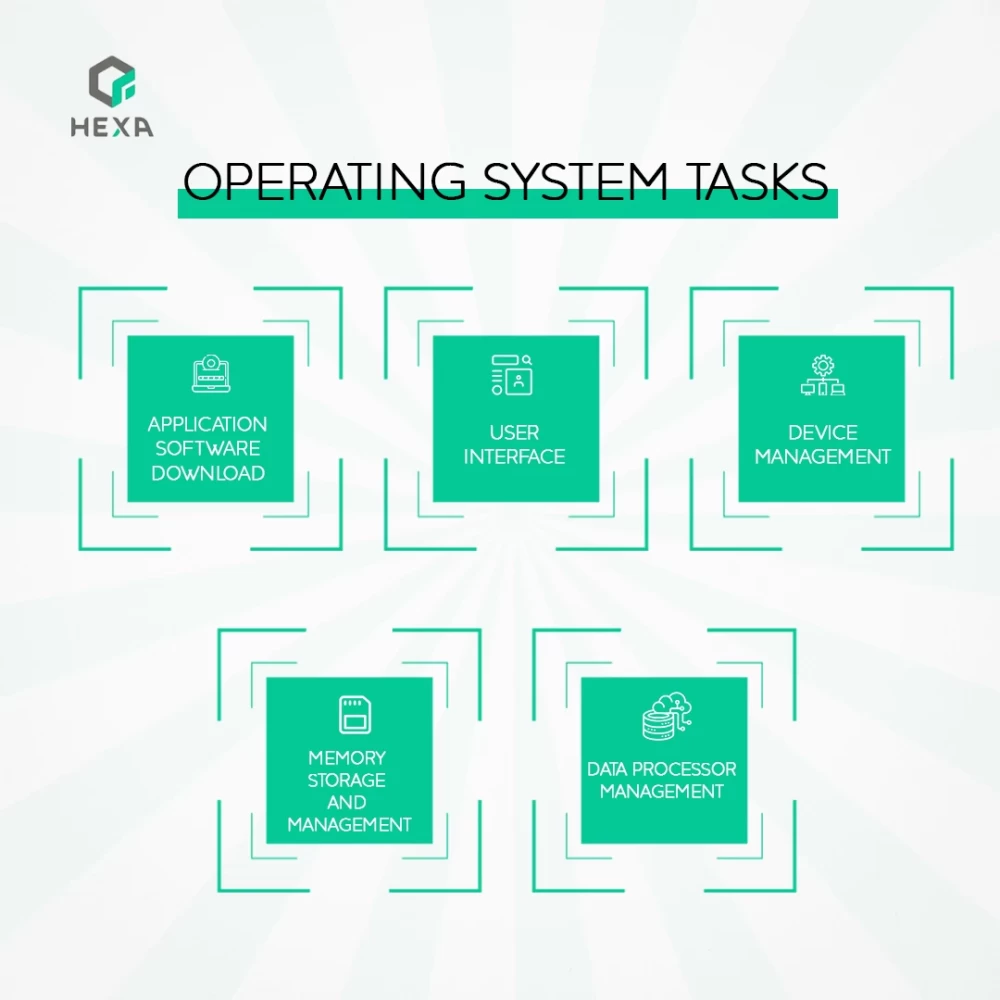- Development
- 2018-10-22
Types and functions of operating systems
By: Hexa

What is an operating system?
It is a group of programs responsible for managing a computer’s software, the mediator between the user and the computer’s software and the main operator of a computer device. It carries out main tasks such as managing and allocating the computer’s sources (memory, hard drive, access to attached devices, etc.), arranging order priorities, controlling input and output devices such as the keyboard, facilitating networks and managing files.
There are many operating systems such as Windows, Mac OS X, MS- DOS, Haiku, Chrome OS, MenuetOS, eComStation and Tails.
Tasks of Operating Systems:
Managing the device
An operating system controls the direction and influx of data through controlling the movement of data between a computer device’s units and through monitoring processing operations. It then displays the data on hardware units such as the monitor or printer. It also discovers damages and provides a report on them.
Managing the data processor
Among the tasks of an operating system is to assign enough time to process all applications and operations to enable them to work efficiently. This is especially important when there are multiple tasks as when a user uses multiple applications and operations simultaneously, the operating system’s role is to ensure there are enough sources to operate these applications and operations well.
Memory storage and management
A computer device contains four types of memory: the main storage memory, the secondary storage memory, the random-access memory and disk storage. An operating system must make sure that the needs of each operation or application are balanced with the available types of memories and that there is enough storage space for each operation to carry out its function. It must also ensure that the memory of a certain operation is not used for another operation.
Using the user interface
The user interface is the part through which a user interacts with the application. The operating system works as a translator between the user and the computer by helping the user to follow the implemented programs and orders by displaying them on the monitor. This directs the computer correctly.
Loading application software
This involves the operating system’s role in transferring application software from storage media to the main memory, and then to the CPU for it to be implemented.
Operating systems can be divided into two types:
Multi-tasking systems
They are systems capable of implementing more than one task simultaneously and allowing several users to use programs and applications on the computer.
Single-tasking systems
They are systems that allow only one task at a time and one user to use programs and applications on the computer.
Tags
system of software
Meaning of Operating system
operating system
operating system
software
main operator
computer software
operating system functions
user interface
data processor.





